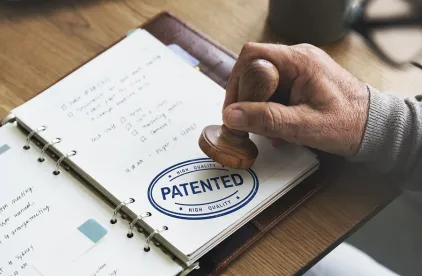In Univ. of Strathclyde v. Clear-Vu Lighting LLC, the Federal Circuit grappled with the issue of whether claims directed to methods and systems for inactivating bacteria using blue light were obvious in view of a prior art combination that taught the claimed elements but lacked an indication of success. Ultimately, the Federal Circuit found that the patent’s success where the prior art failed – inactivation of the bacteria without a photosensitizer did not support a finding of obviousness.
The patent at issue, USP 9,839,706 (“the ‘706 patent”) owned by the University of Strathclyde (“Strathclyde”), relates to methods and systems for disinfection by inactivating Gram-positive bacteria such as Staphylococcus aureus (MRSA). Among other features, the patent recited inactivating the bacteria by exposing it to visible light in the range 400-420 nm without using a photosensitizer. Strathclyde’s exclusive licensee sued Clear-Vu Lighting (“Clear-Vu”), a manufacturer and distributor of disinfectant light fixtures and lighting solutions, for infringement of the ’706 patent. In response, Clear-Vu filed an IPR petition, asserting that the claims of the ’706 patent were invalid as anticipated or obvious in view of several prior art references: Ashkenazi, Nitzan, and Jones.
The Ashkenazi reference disclosed a method for photoeradication of P. acnes bacteria using blue light, with some experiments utilizing the photosensitizer δ-aminolevulinic acid (ALA) when growing the bacteria while others did not. However, in all of Ashkenazi’s experiments, the media used to grow the bacteria contained riboflavin, a photosensitizer. Under these conditions, Ashkenazi reported a decrease in viability of the bacteria when irradiated with blue light at 407-420 nm.
The Nitzan reference continued the experiments from Ashkenazi, this time on MRSA. Like Ashkenazi, Nitzan prepared some cultures with ALA and some without. In these experiments, the bacteria was not exposed to any other photosensitizers. For the cultures prepared without ALA, Nitzan reported no decrease in viability of the bacteria after illumination. In other words, Nitzan failed to inactivate the bacteria without using a photosensitizer.
In the IPR proceedings, the PTAB agreed with Clear-Vu that Ashkenazi and Nitzan rendered claims 1 and 3 obvious, and that Ashkenazi, Nitzan, and Jones rendered claims 2 and 4 obvious. The PTAB concluded that one of ordinary skill in the art would have been motivated to combine the references and “would have had a reasonable expectation of successfully doing so.” The Board reasoned that, although neither Ashkenazi nor Nitzan achieved inactivation of bacteria without using a photosensitizer (as the ’706 claims require), a person of skill in the art relying on Ashkenazi’s teachings that increasing light doses, number of illuminations, and length of time the bacteria are cultured resulted in greater inactivation for both ALA and non-ALA cultures would have reasonably expected some inactivation for the non-ALA MRSA in Nitzan.
On appeal, the Federal Circuit reversed the PTAB’s obviousness findings. The court first took issue with the Board’s conclusion that one of ordinary skill would have been motivated to combine Ashkenazi with Nitzan. All of Ashkenazi’s experiments used a photosensitizer (either ALA and riboflavin, or just riboflavin) and Nitzan’s experiments without a photosensitizer did not inactivate any bacteria. Thus, the Federal Circuit rejected the Board’s finding that one of ordinary skill in the art would have been motivated to prepare an MRSA culture without a photosensitizer (as in Nitzan) and use increasing amounts of light energy, number of illuminations, and length of time (as in Ashkenazi) to arrive at the claimed invention.
The Federal Circuit also refuted the Board’s determination that one of ordinary skill in the art, when combining Ashkenazi and Nitzan, would have had a reasonable expectation of success in inactivating MRSA using blue light without also using a photosensitizer. The Federal Circuit pointed to the lack of evidence in the record showing bacterial inactivation without using a photosensitizer. Instead, the evidence of record showed that others had failed to achieve the desired results without photosensitizing despite trying different doses and wavelengths of blue light.
This decision affirms that while “absolute predictability of success is not required” to find a patent obvious, “failures to achieve that at which the inventors succeeded” weighs against such a finding.




 />i
/>i

